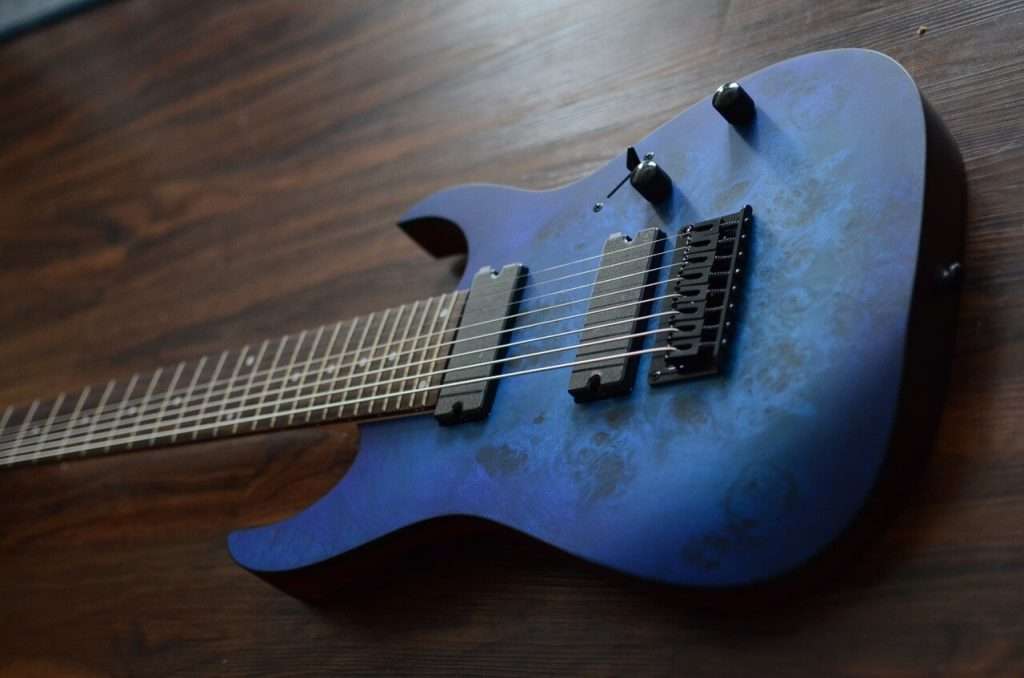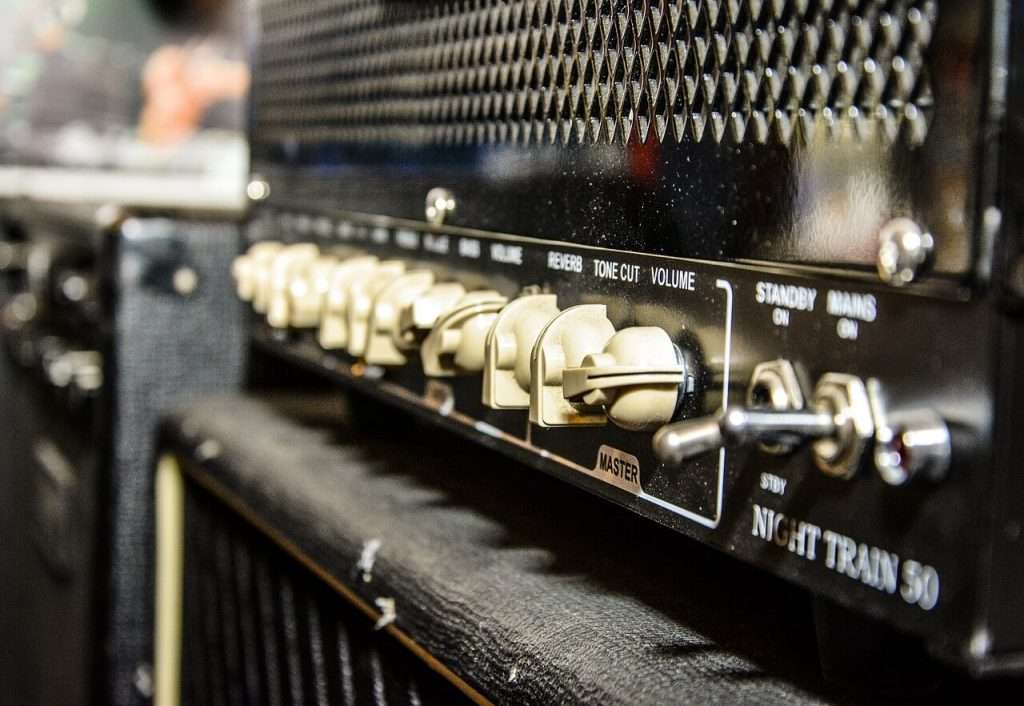
Djent started becoming popular in the metal scene almost exclusively for a meme (the almost ubiquitous “but does it djent” meme) , but one of the main credits for this was the renewed interest for that subgenre of metal.
In this article we’ll see how to get a djent tone from your own electric guitar and how to set up amps and pedals for that heavy sound.
WHAT DO I NEED FOR THAT DJENT TONE: TALKING ABOUT THE EQUALISATION
Despite the common thought and “myths” about djent = lots of strings, you can actually get that tone even with a “normal” 6 strings guitar: sure, you can get a lower sound and more brutal riffs with a down-tuned instruments with even more strings, but for this metal genre the number of strings isn’t the most important factor.
One of the most important part of that sound is how you EQ your final sound: you need lots of mids and some tweaks to your amp’s settings, but generally you can get quite a nice sound with:
- bass frequences rolled down;
- a lot of mids (usually on an “almost full” position, but it depends on the amp usually);
- a bit of treble (from 9’o clock position to the 12’o clock position, almost always below the middle position of the knob anyway)
Another requirement is a high-gain amp and also an overdrive pedal and one of the most important ingredient for that tone: a noise gate pedal.
AMPS FOR A DJENT TONE
Djent bands use such a huge variety of different amps that you can safely say that the only requirement for an amp is simply to be able to output a high-gain sound.
Some of the most recommended amps, though, are:
- Peavey 6505;
- EHV 5150III;
- Savage 120
Almost any high-gain amp, though , can be good, and also amp-modeler such as the Kemper (despite being for more high-budget wallets), or also Line6 gears(for example the Line6 Helix for higher budget or also the Line6 POD for a more cheaper solution), axe-fx software (also used by the band Periphery) or the cheaper BIAS modeling software.

WHAT KIND OF PEDALS TO USE
The two pillars of the djent sound, regarding pedals and stompboxes, are the distortion/overdrives and the noise gates, but another very useful tool for a more customised sound, despite not essential, is a EQ pedal.
The gain needed for this djent-esque sound isn’t, despite what you would think, with an insanely high gain, but rather with a mid-level gain and the right EQ settings.
For this reason you would need a “normal” overdrive (for example, a Tube-Screamer-like pedal, either an original Ibanez model or a copy) with a near-the-middle (or, better said, with 12’o clock settings) levels of gain.
Beyond the distortion, a noise gate is needed for providing that silence in between the played notes (having lots of hum and background noises while you play isn’t very nice to hear): for this reason, you have a wide variety of settings, but usually the noise-gate pedal is placed after the distortion, or sometimes both before and after the distortion pedals.
Sometimes you can find even more than 2 noise-gates, but it really depends on your own pedalboard and preferences.
Another optional pedal for this sound is an EQ pedal, that let you set the frequencies with the mentioned settings:
low bass, very high amount of mids and a bit of trebles.
A basic setting for a pedal-chain can be:
guitar —–> noise gate —-> distortion pedal —–> noise gate —–> (optional) EQ pedal —> high-gain amp
WHAT STRINGS TO USE FOR DJENT
There isn’t a true reccomendation for what strings to use, but a general reccomendation is to simply use medium-high gauge strings (and obviously not weared out ones that sounds dull and ruined).
SUMMARY: GETTING A DJENT TONE
In short, the main things for a djent tone can be summarised as EQ settings and some pedals.
- Settings for your amp should have:
- low/very low bass and low frequencies;
- lots of mids;
- a bit of treble (usually in the middle area, a bit under the 12’o clock settings and anyway under the first half of the knobs/provided settings for your amp.
2. your pedalboard should have:
- Distortion/overdrive pedal (One of the most used option is a Tube-Screamer like pedal);
- Noise Gates (usually placed after or both before and after the distortion pedal, but sometimes even more frequently in the pedalboard if you have more distortions stacked up);
- (optional) an EQ pedal that let you tweak your sound’s frequencies, following the amp’s settings
A common signal chain for djent may be the following:
guitar —–> noise gate —-> distortion pedal —–> noise gate —–> (optional) EQ pedal —> high-gain amp
If you want some more specifical suggestions about gear you can also check out the following articles:
- best pedals for djent: read more;
- best pickups for 8 string guitars and for djent sounds: read more
- best strings for djent: read more

